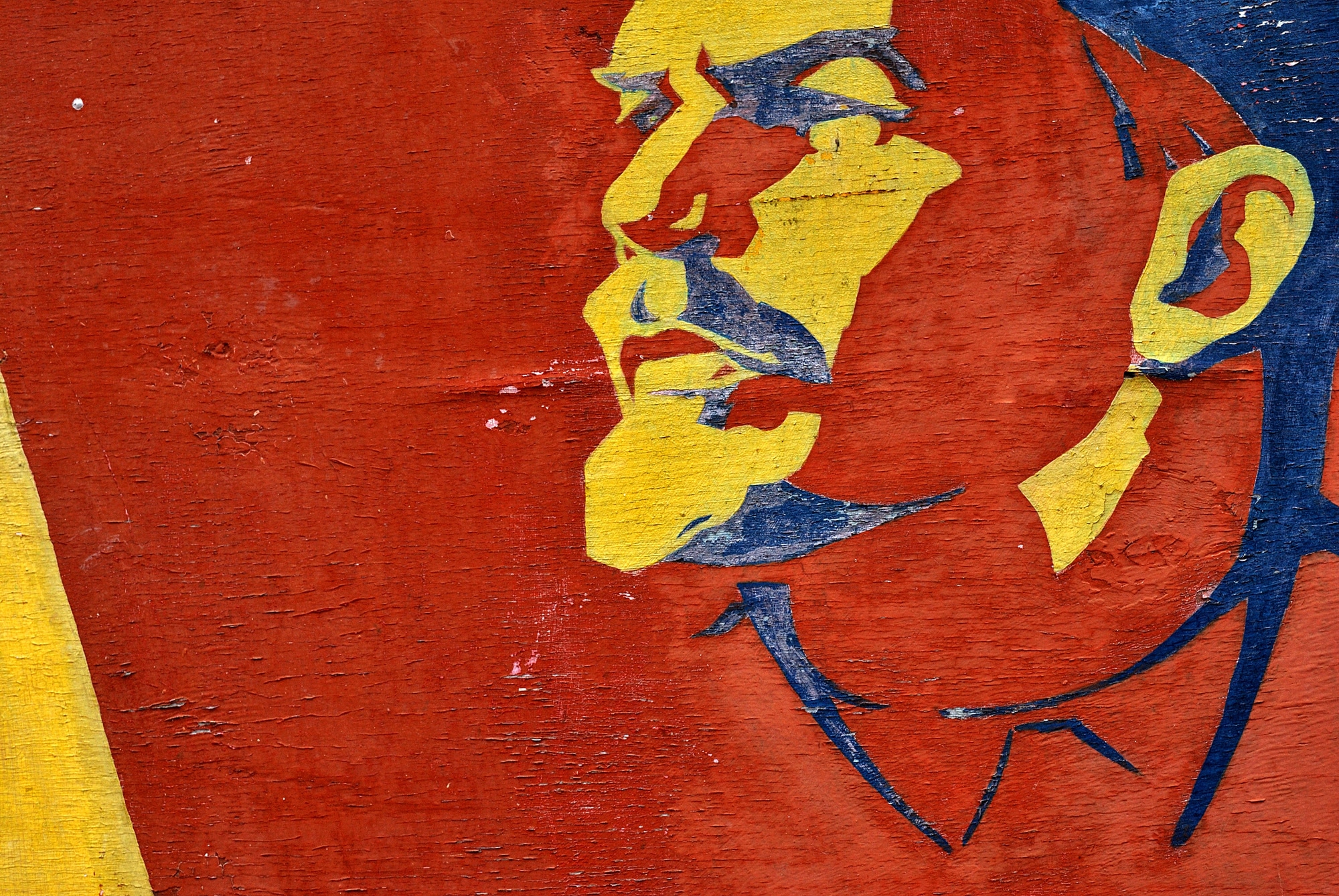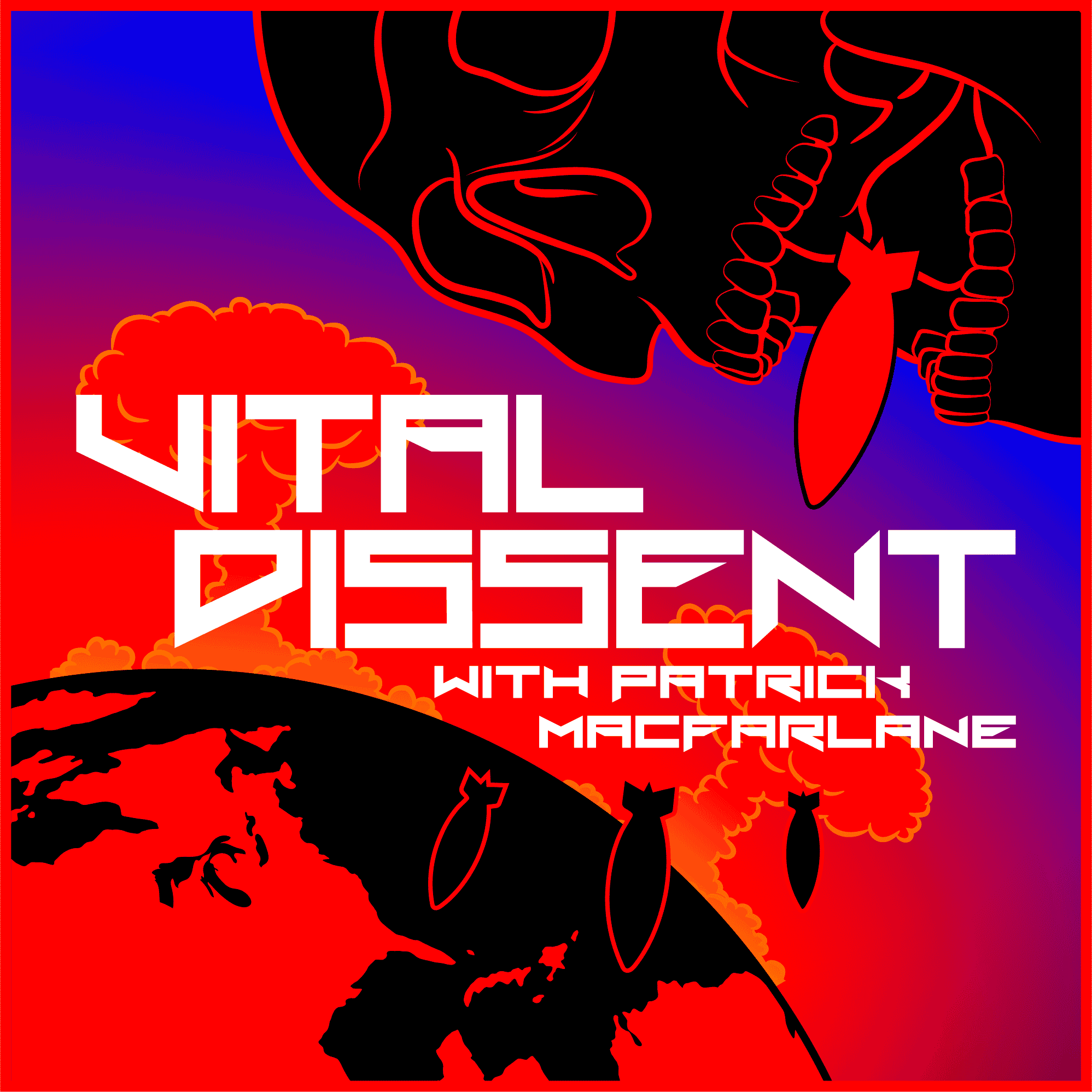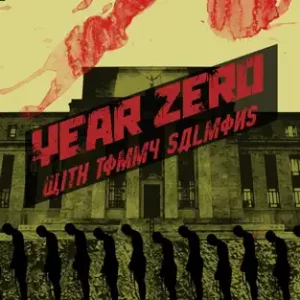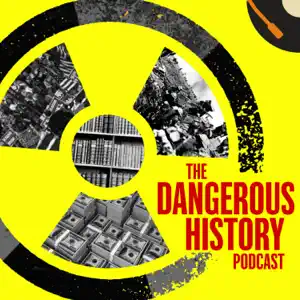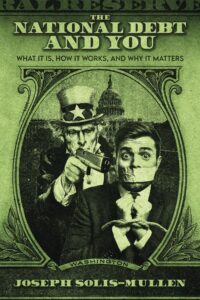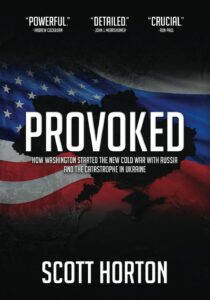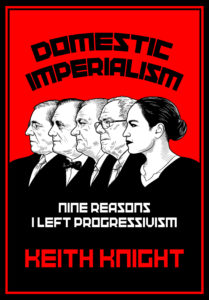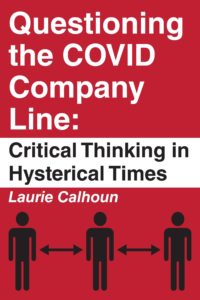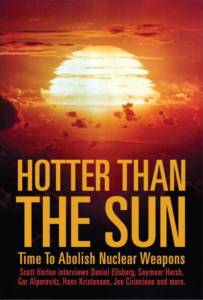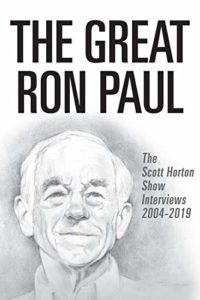If you had to pick the single most influential individual of the twentieth century, Vladimir Lenin would almost certainly be in the top of your bracket. While a certain Austrian art student might have a bit more x-factor—as we say in the sales business—the leader of the Bolsheviks probably did more than any other single individual (with the possible exception of Gavrilo Princip) to set the “Century of Blood” in motion. Exactly why and exactly how the Tsarist autocracy of 1914 came to be replaced by the totalitarian Bolshevism of 1921 (the last real year of the Civil War against the Whites) is, therefore, more than a purely academic question; the global struggle against Bolshevism and its descendants is the central geopolitical theme of the twentieth century, especially after the competing totalitarianisms of Germany and Japan were vanquished.
The one-hundredth anniversary of the 1917 Revolutions, since there were two, occasioned a spate of new books and new editions; two of these, Sean McMeekin’s The Russian Revolution and Orlando Figes’ A People’s Tragedy, essentially present the bull and bear cases for the pre-war Tsarist autocracy. Figes originally published his book in 1996, drawing on a wealth of newly-obtained archival evidence and personal narratives (especially those of the peasantry), and one gets the sense that the revisions were light rather than total. Still, the tone of the book feels (if anything) more appropriate to the pessimistic years post-2017 than the seeming sunlit uplands of 1996. The end of the Soviet Union and the partial opening of its archives allowed historians to gain much deeper insights into the Bolsheviks’ internal struggles and their war on the Russian peasantry—one which continued intermittently until the outbreak of the Second World War—and Figes was one of the primary beneficiaries of it.
One of the best indicators that Figes is a reliable and accurate chronicler of the USSR as the chamber of horrors it was is the Wikipedia article on A People’s Tragedy, which describes the book as “liberal” in scare quotes and contains a long paragraph from the flatulent and blessedly dead Eric Hobsbawm kvetching about its anti-Soviet tone. Figes also doesn’t stint on the “People” of his title; the narrative integrates the life stories and memoirs of a number of Soviet citizens, high and low, and traces their recollections of the Revolution and its aftermath. Having lived through a few world-historical crises myself at this point, getting the perspective of people who were just as confused, paranoid, and frightened by unfolding events as I remember myself to have been is tremendously helpful in understanding the period as it was lived (and in explaining some of the more inexplicable-seeming parts of the Revolution).
McMeekin’s book was written later, and from a more obviously rightwing perspective; it clearly owes a great deal to the historians of the nineties who demonstrated that the popular (Soviet) narrative of the February and October Revolutions was inaccurate, sometimes an outright farrago of lies. He relies heavily, particularly in the middle chapters that form the best part of his book, on German intelligence reports, documents recovered from the Provisional Government’s investigation of the Bolsheviks for treason, and the military records of the Tsarist Army. All of these are valuable sources, and he is to be commended for uncovering some fascinating testimonies from members of the Provisional Government which have long been ignored. But frequently he fails to explicitly evaluate the quality of the evidence he is providing or delineate his sources in the text vs. the endnotes. Ultimately, both books are works of popular, rather than academic, history so the lack of explicit discussion and evaluation of the sourcing is forgivable. The problem is that when one peeks behind the curtain at McMeekin’s sources, one often feels as though he is fighting tendentious pro-Soviet historiography by cherry-picking sources himself.
The basic divide between the two historians is simple: for Figes the Revolution was inevitable, for McMeekin probable, but ultimately accidental. In Figes’ telling, the Russian state on the outbreak of World War I was fatally-compromised, its legitimacy on the land and in the cities undermined by the 1905 Revolution and its subsequent suppression, and its government run by a clique of out-of-touch minor aristocrats surrounding the slightly-to-possibly-wholly-delusional Empress Alexandra of Hesse (Alix) and her easily-led husband Nikolai. For McMeekin, the Russian Empire was a rising power, experiencing an industrial boom comparable to that of modern China in the prewar period, with a surprisingly efficient police force—McMeekin estimates about a thousand employees in the entire political section of the Okhrana (the secret police)—and a generally loyal and well-fed army (McMeekin returns to this repeatedly).
I’ll tip my hand immediately: McMeekin did not persuade me on the strength of the pre-war autocracy. I wanted to believe him; the Russian Revolution was an epochal tragedy and unleashed a regime whose evil still pollutes the world decades after its decline. But while I think McMeekin and Figes would agree that the Bolshevik seizure of power was not inevitable, the fact of the matter is that Tsarist autocracy in 1914 was shaky. McMeekin, to his credit, acknowledges this by titling his final chapter before the war breaks out “Fragile Giant: Tsarist Russia on the Precipice of War,” but I think this is symptomatic of the tone of his book, which repeatedly acknowledges the weaknesses of the Tsarist system before swerving back to argue that, perhaps, they weren’t quite so serious after all. Let us delineate a few of the weaknesses.
Terroristic violence against the government was an established fact in Russia since the 1860s, and the intelligentsia and bourgeoisie always had an at worst ambivalent view of this terrorism (and provided many of the recruits). Nor was the terrorism limited; as Figes notes, it is estimated that 17,000 people were killed in terrorist action in the last two decades of the Tsarist regime (1,200 in 1912 alone), more than five times the number killed in Northern Ireland during the twenty-five years period of The Troubles. Worse, the killing accelerated as Russia rolled towards the First World War, indicating that far from having endured the revolutionary crisis of 1905 the government had merely kept it simmering (cf. the Assad regime in 2024). The security crisis was a continuing concern; Nicholas’s grandfather had been assassinated, his father faced numerous plots (including one hatched by Lenin’s older brother, who was hanged), and his most effective and influential prime minister, Pyotr Stolypin, was shot dead before his eyes in the Kiev Opera House.
To digress for a moment on Stolypin; Figes and McMeekin both identify him as the most important of Nicholas’s prime ministers, but they are starkly divided on his effectiveness. This comes down (more or less) to the question of his land reform, and the question of land reform ultimately brings us to the peasantry, which brings us to the crux of where (I think) McMeekin fails and Figes succeeds.
What you fundamentally get from Figes’ discussion of the Russian peasantry is how different they were from the European peasantry. Serfdom was only abolished in 1861, and even then quite halfheartedly, with peasants essentially placed into collective debt-bondage in order to buy the land the government had given them from their former masters’ estates (collective since the land and the debt was transferred to the peasant communes, not the individual peasants). Nor did this reform satisfy the masters, who were frequently land-rich and cash-poor (like Southern slaveowners) and found themselves going broke in the aftermath of emancipation with little peasant progress to show for it.
But unlike Southern slaveowners, moreover, the rate of absenteeism among Russian nobles was high; especially in the central districts of the country around old Muscovy (some of this was a consequence of the increasing centralization of the court in Saint Petersburg, which drew many to the nexus of power and away from their estates). This absenteeism, the strict and highly detailed system of rank which pervaded every part of the Tsarist government, as well as the fact that the educated classes in Russia (especially prior to the growth of nationalism) spoke French for preference, created a degree of social distance which to my eyes seems greater than that between Southern slaveowners and their chattels. This is also, in some sense, because of the lack of capitalist development in Russia (it’s impossible to write about Russia without sounding a little Marxist); as entrepreneurs and managerial elites, Southern slaveowners had a tremendous concern for their farms’ productivity and the quality of their labor force in a way that Russian nobles, disdaining commerce and spending little time on their estates, did not.
The noble and gentry classes had a complicated relationship with the peasantry colored by a simultaneous disdain for and idealization of the muzhik (the typical term for “peasant” back in the day, which through a weird series of semantic shifts has come to have a slangy meaning, something like “badass” in modern Russian). Much of the liberal nobility and gentry especially saw the peasants as intrinsically good, downtrodden people who represented the true spiritual core of Russia (leading them to excuse or even condone peasant anti-system violence, particularly under the Provisional Government). Ironically, the Bolsheviks, being more urbanized, were less deceived by the kind of spiritual woo that Russian elites seem to love (mystification and bafflement do seem to have a particular appeal for the Russian) and were much less tolerant of the romanticization of the peasantry.
In Figes’ telling the peasant world was what people imagine medieval European peasant life was like (I could write a book, and books have been written, on how wrong that imagining is, but nevertheless). The peasant commune was also known as the mir or world, and even in the post-emancipation era peasant life largely remained in the compass of this world. Some of this was due to the continuing restrictions on peasant movement in the post-emancipation era, but it was also the case that Russia was simply not provided with self-governing cities, towns, and villages in the way that Western and Central Europe were (the spread of Magdeburg Law and the independent town through Poland-Lithuania was one of the social technologies which defined central Europe). Instead of a German-style patchwork of small cities and towns interfacing with peasant villages and smallholders directly, much of central Russia in particular was characterized by peasant communes which were worlds unto themselves, with urban foundations being rare, new, and poorly-integrated into the regional social framework.
Many things conspired to keep the peasant communes insular and economically-inefficient; for example, the mir redistributed the communal land annually, and land was farmed collectively in strips, with no hedges or fences between. This meant that the three-field crop rotation system which helped European peasant agriculture begin producing ever greater surpluses from the early Middle Ages on was effectively impossible. The efficiency gains from this practice to the medieval European peasant, then, were still largely unrealized in the Russia of 1861. Land was parceled out to households based on size, and the brevity of the agricultural season meant that large families were essential, since the growing season needed to be exploited in short bursts of fanatical activity. This meant that Russia had by far the highest birthrate in Europe by the nineteenth century, but equally that the peasants had to make do with less and less land (this demographic pattern would also mean that the putative “Russian Steamroller” of peasant conscripts which was supposed to crush the Germans in 1914 would never quite come into being, because much of Russia’s massive population was actually too young to be drafted).
This boom in population with a static supply of land was the same problem faced by many European countries over the course of the transition to modernity; but problems of legal and social structure prevented solutions of more efficient agricultural methods and more intensive land exploitation from being applied. Peasants in the mirs were not legally-allowed to own their allotments outright until the Stolypin reforms began in 1906. Prior to that, all land which had been transferred from the gentry was owned by the mir, and equally, the debt owed to the gentry was owed by all, and peasants could not legally leave the land without repaying it. Since the peasant’s individual or familial surplus (especially in the central agricultural region) was small, this was impossible for all but the most entrepreneurial. Equally, in order to leave the commune, the peasant had to receive permission from the mir assembly. Indeed, almost every aspect of peasant life was dominated by the headmanship of the patriarch of his family and by the collective control of the village assembly. Only with Stolypin’s reforms did the peasants begin to have any significant contact with the state’s judiciary in either criminal or civil matters (compare this to England, where the 1166 Assize of Clarendon would lead to peasants of relatively little means suing each other in royal courts quite regularly within decades of its enactment, beginning a still-undimmed tradition of Anglo litigiousness). It is also worth noting that the peasant life was (although Figes provides little in the way of firm statistics) extremely violent, with wife-beating, child-beating, fist-fighting, murder, and collective mob justice being facts of life.
This is not to say that modernity had failed to lay a glove on the peasant world prior to the Revolution; literacy rose from 21% in 1897 to 40% on the eve of the First World War, and more peasants were leaving the commune for (pun intended) greener pastures, either in the cities (which were growing rapidly) or in Siberia. Siberia, which had few peasant communes and an abundance of smallholders, was actually an economic problem for the Tsarist autocracy. Individual land tenure and more modern farming methods made Siberian grain so cheap that the government actually instituted an internal tariff on the Trans-Siberian Railroad at Chelyabinsk in order to keep the price of grain in the cities of Central Russia high enough that noble estates in that area (and to some extent the peasant communes) would remain economically-viable. This led to the enterprising farmers of Siberia becoming some of the largest producers of butter in the world, with Siberian butter being brought cheaply to the breakfast tables of England throughout the 1900s (although it was often sold as “Danish” butter since that could command a higher price). The Siberian butter industry, and Siberian agriculture in general, would be essentially destroyed by Soviet collectivization policies, leading to further disasters like the Virgin Lands campaign. It really is difficult not to marvel at the shortsightedness of the Tsarist regime in attempting to push up the price of Siberian grain.
And here we come back to Stolypin and his reforms. The cornerstone of these was his attack on the Land Question. Fundamentally, as Prince Lvov (first prime minister of the Provisional Government) would write, every peasant believed that one day the landlords’ land would become the peasants’ and that this would mark a sort of peasant millennium when all the evils of the current age would be banished. Stolypin, who began his administrative career in Kovno (Kaunas), one of the old lands of the Polish-Lithuanian Crown wand here land tenure more closely followed European patterns, saw the destruction of the peasant commune as the first step to achieving real reform and real stability in Russia. This was further reinforced by his tenure in Saratov, in the territory of old Muscovy, where the communal system prevailed. Stolypin’s tenure coincided with the 1905 Revolution, which saw peasants across the country, but especially in the old Muscovite lands rise up, burn the manors of their landlords, rape, torture, and kill (that the peasants loved rape, torture, and murder is a semi-unintentional theme of Figes’ book) what few individuals in the area happened to represent state authority, and essentially set up their mirs as self-governing communes in possession of all of the local land. This was a dress rehearsal for what Figes calls the “Revolution on the Land” of 1917, where peasants across the country rose up for autonomy and land, attempting to create a world in which the peasant commune controlled all of the land and did not have any obligations to external authorities.
Stolypin’s insight was that the mirs were holding Russia back, and that private land tenure would allow Russian agriculture to become more productive and efficient along Western European lines (as indeed it was becoming in the ring of peripheral areas like Siberia, the western Ukraine, etc. where the mir system was more loosely established). In essence, Stolypin wanted to create a class of conservative peasant smallholders who could form the bedrock of a new, pro-regime coalition against the liberal intellectuals and the semi-socialized proletarians. To do so, he allowed peasants to purchase their own land from the gentry, separate from the commune, and set up farms that were formally outside the jurisdiction of the mirs. This amounted to a “wager on the strong,” a bet that those peasants who were most entrepreneurial and successful could make a go of it outside the commune and form the basis of a new class of commercial farmers who could both provide the grain surplus needed for export and the cities and bring wealth and modernity into the countryside.
The division between McMeekin and Figes is over whether Stolypin succeeded or not. For Figes the answer is essentially no; while he agrees with McMeekin that the reforms had some impact in the post 1905 era, as soon as the war began and the government’s authority in the countryside began to wane (which Figes argues had begun prior to February 1917), the mirs took their revenge and began to force those who had split away to return their lands, tools, and lives to the control of the collective. In point of fact this had begun much earlier. As McMeekin noted, there were only about 6,000 policemen in the whole of Tsarist Russia, and this was far too few to protect the peasant entrepreneurs from the violent retribution of their fellows, and there was much of this. The army had been called in to put down the “Revolution on the Land” in 1905, and it had shot and hung some of the most rebellious peasants and forced some level of acquiescence to the government. But my read (and Figes’) is that the authority of the government was never truly reestablished in much of the country, and certainly once Stolypin’s attempts to increase bureaucratization and peasant collaboration with local governance were abandoned (after his assassination), the countryside remained pregnant with rebellion.
This takes me back to McMeekin; while he provides statistics that show that the Stolypin reforms had some positive effects, he only superficially engages with the “Peasant Problem” in the prewar period. This fundamentally undermines his case (in my eyes), since so much of Russia was peasant and since the problem was so massive. More than anything else, Figes’ telling of the Russian Revolution made me think of the Congo Crisis of the 1960s, with a massive country falling into turmoil as the great mass of divided, tribalistic, largely unmodernized people rose up against a thin veneer of “Europeanized” civilization controlled by an essentially foreign elite. The “Revolution on the Land” as understood and enacted by the peasants feels like an anti-colonial revolt more than a “communist” revolution, especially since the peasants resisted the Bolsheviks’ attempts to impose communism as fiercely as they resisted all other forms of outside authority. This, I think, more than anything else speaks to exactly why the Russian Revolution and the Bolsheviks’ first thirty years in power were such a bloodbath. Trying to impose any outside authority on the Russian peasants was difficult enough once they had a taste of autonomy; trying to impose central bureaucratic planning on a people who were instinctively mistrustful of any external authority was next to impossible without wholesale slaughter and brutality.
With all of this said about the weakness and unpopularity of the Tsarist regime, both Figes and McMeekin agree that it would not have collapsed without external strains. This is by no means an uncommon opinion, now or at the time. In fact, as McMeekin does a very good job of revealing, the conservative monarchists whom Nicholas preferred to keep as advisors were very much against getting involved in the First World War. It was the liberal Slavophile intellectuals who saw war as a crucible to unite the nation and as the vehicle through which they might force constructive political change on the Tsar (the idea that a short, victorious war can unite a nation and build a strong government works just often enough to be dangerously tempting). Stolypin had said that his reforms would need twenty years of peace to succeed, and Rasputin, for all his sinister reputation, was deeply opposed to war. In fact, Rasputin’s anti-war credentials were one of the main reasons why the liberal aristocracy and intelligentsia despised him as the leader of a supposed pro-German “Black Bloc” who were attempting to undermine the war effort.
I should digress for a moment on Nicholas, since I haven’t discussed him. Both Figes and McMeekin see him as weak, ignorant, and easily led, but despite these flaws was devoted to the coronation oath that required him to be a personalist autocrat. This created a leadership vacuum, but one which (owing to the Tsar and Tsarina’s intransigence) was resistant to being filled. Nicholas was supremely indecisive, but would allow no one else to make decisions in his place; hence the situation within Russia seemed to continually drift out of all control as the one authority which could have changed course failed to. Some have said that Nicholas needed a Bismarck, but Nicholas could not have tolerated a Bismarck; he could not and would not allow others to make the choices which he himself refused to make. This is why Stolypin seems like such a bright spot, but under a keener gaze looks like less of a missed opportunity. While he would have made a good master for a weak Nicholas, Nicholas would have no master. McMeekin is highly critical of the liberal leaders who conspired to overthrow Nicholas in February, and they admittedly did no better than he, but the horror of what came after obscures the very clear truth that Nicholas was unfit to rule, and this formed the central political problem of Russian politics until his abdication.
Having been relatively hard on McMeekin, I would be remiss in failing to discuss the reason to read his book—although you should read it, as I did, after Figes’. McMeekin provides excellent coverage of the war years 1914-1917, and of the February Revolution, and he does a very good job of providing what feels like a contemporary perspective, versus Figes whose discussion of the Russian war effort does seem colored by the fact that he knows the ending. A lot of this is probably because McMeekin’s background is in Ottoman history, and it was on the Ottoman front that the Russians were most successful (although not continually).
McMeekin points out, quite reasonably, that the first year of the war was not an unmitigated disaster for Russia (in contrast to the catastrophe that was 1941). Despite the setback at Tannenberg, it was just that: a setback. In fact, Tannenberg was the culmination of a genuinely impressive improvement in Russian military power before the war which allowed the Russians to complete their mobilization only three days after Germany did. If any power, if any army looked to have shot its wad and proved itself impotent in the first year of the war it was Austria-Hungary’s Imperial and Royal Army which had been slaughtered in its initial foray into Galicia and then mauled so badly in the rest of the year that without German support the Dual Monarchy might well have collapsed in 1914. In fact, in Galicia the Russians had won a major victory, with Lemberg (Lwów/Lviv) falling on September 3 and almost all of Austrian Galicia up to the Carpathians in Russian hands by the end of the year.
But these gains were hard won; Russia’s prewar formations and first-line reserve units were chewed up horribly in the opening months of the war. The Battle of Przemysl in October 1914 marked what was essentially the last hurrah of the old Russian Army. This old Russian Army not only comprised the standing units but also the first-line reserves; as a budgetary measure, the other much larger reserve classes subject to later mobilization were largely untrained. Thus, by the end of 1914 the Russian Army was made up of a large number of conscripted peasants, often dragged from their farms with little understanding of what the war was about or why they were expected to endure the struggle. It is worth quoting Figes at length here:
“The soldier of the Russian army was, for the most part, a stranger to patriotism. Perhaps, to a certain extent, he could identify with the war as a defense of the Tsar, or of his religion, but defense of the Russian nation, especially if he himself was not Russian, meant very little to him. He was a peasant with little direct knowledge of the world outside his village and his sense of himself as a ‘Russian’ was only very weakly developed. He thought of himself as a native of his local region and, as long as the enemy did not threaten to invade that area, saw little reason to fight with him.”
This is the critical key to much of the mystery of why the army collapsed in 1917; they simply had no reason to be at the front. The issue was not material. As McMeekin points out, in both the prewar and wartime armies the Russian soldier ate better than the average Russian peasant, and once the Allied blockade began to bite he ate much better than his German counterparts. McMeekin relates many stories of German soldiers wandering into no-man’s-land to barter with the Russians for bread (the food situation in the cities was worse, although McMeekin argues still not catastrophic; it seems like an exercise in hair-splitting to discuss if the food situation in Petrograd was truly “dire,” since it was felt to be so by many at the time, which is the relevant issue). The fact of the matter was, the Russian Army did not, in its heart, believe in the war it was being called upon to fight.
To discuss the ins-and-outs of the political situation in Russia over the course of the war, as McMeekin does very well, is probably pointless; they’re interesting but ultimately the details are unimportant. To a modern observer it all looks like second-rate liberal intellectuals and politicians conspiring against fourth-rate Tsarist loyalists. The February Revolution was understood in many ways at the time, but after a century it appears to be the confluence of two very separate processes: at the top, in palaces and the Duma, the liberal and even much of the conservative and reactionary elites saw the war being lost either through the stupidity or the treason of the Romanovs and their few remaining elite allies (men like Alexander Protopopov, the Interior Minister and head of the Police during the February Revolution, whose main contribution during cabinet meetings during the critical days of February was to repeatedly offer to kill himself as a sop to the crowd). In this they were correct; the Tsarist government repeatedly proved itself unable to manage the war, and the Tsarina (who essentially became the primary authority in Petrograd after the Tsar took personal command of the army in 1915) had an almost unerring instinct for making the wrong choice when presented with a decision.
But it was not the elite defection which pushed the regime into the abyss, it was the disaffection of the workers, the soldiers, and the peasants of Russia. For the masses (again, to sound Marxist), the war was not being lost through treason or stupidity; the war itself was treasonous and stupid. None of the assumptions which were held by the governing class which took Russia to war—Russia’s pan-Slavic leadership, the imperative to conquer Constantinople, the need to uphold the country’s obligations to its allies, the very notion of Russianness itself—seem to have meant much of anything to the vast body of the Empire’s subjects. To them, broadly, these governing classes were demanding the people endure privation and sacrifices for ends that they could not and did not wish to understand.
It was the confluence of these two, very different, revolutionary streams which led to the dual power system where the responsibility for governing Russia was shared between the Provisional Government and the Petrograd Soviet after February, and it was the failure of the Provisional Government and the Russian elite more generally to understand just how little the people understood the war or wished to continue fighting it which doomed the government and in many ways the civilization and society it represented.
One of Figes’ chapters is entitled “The Agony of the Provisional Government,” which does more to elegantly summarize the period from February to October than I possibly could; the Provisional Government under (briefly) Mikhail Rodzianko, then Georgy Lvov, then Alexander Kerensky, was doomed from the start both because of the quality of its leaders and because of the existence of the Petrograd Soviet, which was far more legitimate in the eyes of the people. One of the remarkable things about this period is how fervently all potential governing organs within Russian society wished to shirk responsibility for the hard decisions with which they were faced. The Petrograd Soviet allowed the Provisional Government to take the reins because its leading socialist intellectuals believed that a bourgeois phase of the revolution was necessary before socialism could be achieved (ironically, having read a lot about the Soviet Union’s history this year, I think that on their own terms they were correct). Meanwhile, the Provisional Government had undermined its authority at its own birth by deciding to essentially abdicate all legitimacy to the future Constituent Assembly, which would be elected in the fall and would make all the hard choices on things like land reform or what to do about the increasingly assertive Ukrainian Rada (a conflict which helped bring Kerensky to power).
One gets the sense that the men who formed the Provisional Government were not convinced of their right to rule Russia, and this prevented them from ever effectively doing so. One cannot manifest legitimacy simply by believing in one’s own right to rule, but conveying that one doesn’t believe in one’s own right to rule is almost inevitably a fatal flaw in a leader or a leadership class. The entirety of the country was asking quo warranto and the Provisional Government was never able to answer this satisfactorily; to the extent it had an answer, it was that it was the only government which could allow Russia to win the war But this was not an answer which the people would accept: the people did not want to win the war, they wanted to end it, and they would not rally to defend a regime which promised them victory if someone else was willing to promise peace.
One of the amazing things about the Bolshevik seizure of power is how little immediate armed opposition it inspired; more people were injured during Eisenstein’s tenth anniversary reenactment than were killed in the actual event itself. Kerensky attempted to recapture Petrograd, but his expedition was a farce and while in theory the Government could have taken Petrograd, the fact of the matter was that the will was missing and while the army command may have hated the new regime it had no loyalty to the just-departed one. In fact the major acts of resistance to the Bolsheviks by the representatives of the old regime seem rather petty: the employees of the State Bank went on strike, and the civil servants of the Medical Department removed all the nibs from the pens before walking out. Yet there was no military resistance to the seizure of power; everyone seemed content to wait for the election of the Constituent Assembly as the event which would turn the apparently weak Bolshevik regime out of power. Indeed, the apparent weakness of the Bolshevik regime (even many of its commissars did not believe it could last) allowed it to survive, encouraging passive and non-violent resistance for long enough for the Bolsheviks to establish the terror apparatus which would help suppress and prevent much future resistance.
Meanwhile, the Bolsheviks’ initial decision to leave the countryside in the hands of the peasants (a decision they would go back on, quite violently) would largely neutralize opposition from this quarter; the Bolsheviks were willing to indulge the small-a anarchistic tendencies of almost every section of the empire which wished to see less central control in the initial months of their regime, from the soldiers to the minorities in the borderlands. This served rather neatly to frustrate the ability of any other force to organize a coherent resistance to their rule. This was another example of Vladimir Lenin’s political genius: why would the peasants or the soldiers or the workers join a movement to overthrow a regime which would seemingly indulge their most cherished desires in order to restore either the discredited Provisional Government or the mostly-notional Constituent Assembly? That all of these groups would later have to be brought to heel, with oceans of blood being spilled in the process, was far from a problem for the Bolshevik leadership.
I must be fair to the Bolsheviks here; the level of anarchy in Russia in 1917-1918 was such that it is almost impossible to see how even the most humanitarian regime could have restored order without wading through an ocean of blood. The crime of the Bolsheviks was less that they took this mantle upon themselves (and someone would inevitably have had to), and more that they did so in order to build a state which was predicated on the maintenance of this terror for an indefinite period in the pursuit of terrible goals.
Indeed, even in Petrograd the initial power of the Bolsheviks after the October coup was limited; when Vladimir Pureshkevich (a leader in the ultra-monarchist Black Hundreds and the man who shot Rasputin) was brought to trial on charges of counterrevolution and treason in November 1917, the tribunal put together by the Bolsheviks was only able to sentence him to eleven months of labor in the Peter and Paul Fortress due to the vocal opposition of a large group of soldiers who testified to the effectiveness of his relief work at the front during the war. Many of the future leaders of the White movement were actually able to escape to the south of Russia due to the rather loose nature of Bolshevik control in the early months of the Civil War. In fact, the early months of the Civil War are in a certain sense unbelievable, with armies in the low thousands wandering around the country clearly sensing that something bigger was to come, but with nowhere near the size of the mass armies which would be hurled against each other in 1919.
Reading about this in the opening phases of the Civil War, it feels almost astonishing that the Reds managed to win, given their overt authoritarian brutality. Yet at the same time, the Whites were seen as (and frequently were) little better. The Whites were perceived, mostly-falsely, as being interested in the return of Tsarist autocracy which, as Leon Trotsky said, “the country had so radically vomited up…that it could not ever crawl down the people’s throat again.” But in some ways that description could be applied to the entire Tsarist state, especially in the countryside. The idea of restoring the prewar order—even without the Tsar—with its strong class distinctions (the obsession among the lower classes with the elimination of the informal “you” comes through strongly, as does the simple envious hatred of the well-dressed and well-fed rich) was unthinkable. To quote extensively from Figes:
“After 1918, as the revolution’s ideals became tarnished and the people became more and more impoverished, the Bolshevik regime was increasingly inclined to base its appeal almost exclusively on these vulgar pleasures of revenge. In an editorial to mark the start of 1919, Pravda proudly proclaimed:
‘Where are the wealthy, the fashionable ladies, the expensive restaurants and private mansions, the beautiful entrances, the lying newspapers, all the corrupted ‘golden life’? All swept away. You can no longer see on the street a rich barin [gentleman] in a fur coat reading the Russkie vedomosti [a liberal newspaper closed down after October 1917]. There is no Russkie vedomosti, no fur coat for the barin; he is living in the Ukraine or the Kuban, or else he is exhausted and grown thin from living on a third-class ration; he no longer even has the appearance of a barin.'”
This, Figes posits, is what allowed the Bolsheviks to use their terror and retain the loyalty of the masses. For all of their cruelty, their impositions, their violence, they were seen as being of the people. This is also why the only successful White propaganda during the war was the anti-semitic and anti-German stuff which portrayed the Bolsheviks as agents of International Jewry or the Kaiser. (The Bolsheviks too indulged in much anti-German and anti-Jewish violence, as did the Greens, the Anarchists, the Ukrainians, and plenty of common criminals of no particular political persuasion.) The fact that, whatever their flaws, the Bolsheviks came across as proletarian or peasant meant that when the Civil War became a truly major military conflict in 1919, they were able to retain more of the loyalty of the peasantry than the Whites were (though both sides experienced massive, constant desertion from the ranks of their peasant conscripts).
This once again brings to light the essential estrangement between the Russians and their state, pre-war; the Romanovs, the Provisional Government, the White Army, all represented a civilization that felt foreign, alien, and alienating for the average denizen of a peasant commune. This is not to say that no Russians, or no peasants, assimilated to this culture, or that the development of a mass base for this civilization could not have spread (in some sense the Bolsheviks were to Europeanize Russia more effectively through terror than the Tsars ever managed, but that’s not to say that terror was the only way they did it), but the fact of the matter remains that the aristocracy of St. Petersburg, the Table of Ranks of the Civil Service, all the appurtenances of the civilization that this represented symbolized only repression to the peasantry, and alien repression at that. Again, one is struck by the parallels to the Congo Crisis of the 1960s more than to any other civil war, early-modern or contemporary. The same sense of an oppressed colonized people throwing off the alien trappings of a European colonizer is present, the same anarchy and violence as the “educated” minority loses its grip and the people of the countryside slip their shackles and begin to do as they see fit, and the same eventual consolidation into a repressive dictatorship after much blood is spilled (although Mobutu Sese Seko was no Lenin, putting it mildly).
This collapse of all authority in the country would be a double-edged sword for the Bolsheviks; only since the fall of the regime in 1991 have the contours of what both McMeekin and Figes identify as, in some sense, the true civil war come to light—the war against the peasant Greens. This began with the Bolsheviks’ attempts, once they had formed a military organization, to requisition grain from the country by force. This was naturally unpopular and sparked violent resistance from the peasantry who believed (falsely) that the Bolsheviks would usher in an era of peasant liberty free of state authority. To suddenly have the Reds demanding grain far in excess of what the prewar Tsarist autocracy had demanded, and refusing to pay for it, was to say the least unwelcome. These Bolshevik “Food Armies” and “Food Detachments” in some ways mirrored the Bolsheviks’ parallel nationwide effort to loot the nation of its private wealth, including the confiscation of privately-held diamonds, gold, silver, and art which were to be sold abroad in order to earn hard currency. But once the Whites were decisively defeated by 1921 (and peace was made with the secessionist republics of Finland, the Baltics, and Poland), the Bolsheviks were able to turn on the Greens and crush their military bands across the country with airplanes, armored cars, and (allegedly) poison gas.
While this would not be a total victory for the Reds, the end of the White armies meant that they were able to ease off the requisitions and eventually introduce the New Economic Policy (NEP) which would restore some private ownership and bring some peace to the countryside for a few years—only for a strengthened party-state apparatus to bring about the almost cataclysmic collectivization of Soviet agriculture under Joseph Stalin, which is another topic entirely. In many ways this final Civil War, the civil war against the peasants, would not truly be brought to a close until the death of Stalin in 1953 and the abandonment of mass terror as a way of life for the Soviet state. The Bolsheviks had (under Lenin) been committed to civil war as a means of establishing themselves in power and of bringing about the transformation of society they wished to see, and from a distant enough perspective the history of Russia from 1905 to 1953 is the history of a continuous, shapeshifting civil war, thousand-sided and all-encompassing, which transformed Russia from a truly peasant country into a state more typically modern and European than Russia had ever been.
There is so much more to say on all of these topics, plus dozens more which I haven’t even begun to mention; McMeekin’s book, the shorter of the pair, is 350 pages, and Figes runs to over 800, and it would be impossible to provide a satisfactory summary of either. Of the two, I would recommend Figes over McMeekin; McMeekin’s focus, on high politics and government affairs, is less illuminating than Figes’ attempt to put the whole Russian situation into perspective.
But what of the all-important question: could the Russian Revolution have been avoided? I can only answer, no. The Russian Revolution was not foreordained by the iron laws of history and economics, as the Marxists believed (although, ironically, they only began to believe it when they seized power and needed to justify their holding it), but from the moment Nicolas II chose to go to war in 1914, the country was doomed. McMeekin argues strenuously that this was not so, that the defeats were not so bad, the army not so demoralized, the generalship not so poor and the supplies not so inadequate, and yet he never manages to convincingly explain why in spite of all that the country did collapse. The First World War was a crucible more intense than almost any a social system has ever faced, but only the Russian social system fell apart so disastrously, and a year before the Central Powers faced their own demise. The Provisional Government was doubly-doomed, both by Nicolas’ spiteful refusal to abdicate to a Duma government or a dictator or any other actually-effective political body, and by its legitimate but irresponsible doppelganger, the Petrograd Soviet, which the people wanted in control but which refused to act.
While McMeekin mocks the tendency of historians of the Revolution to focus on the pre-war Russian context in their histories and points out (fairly) the contingent and chancy nature of the Bolshevik enterprise, he likewise puts too much emphasis on the weak personalities who stood in Lenin’s way; Nicholas, Rodzianko, Kerensky, each of these men could have prevented Vladimir Ilyich from taking power. But this is to miss the point; the Bolshevik seizure of power, the dual-power system, the whole of the Russian Revolution would not have happened in a stronger system. A strong system can cope (up to a point) with weak leaders. Certainly an entire social system is not overthrown because of a few bad tosses of the leadership dice. This is not to say that weak systems cannot be strengthened, or strong systems become weak; it would be wrong to blame Nicolas for the Revolution as much as it would be wrong to blame James Buchanan for the American Civil War. The problem is not that Nicolas did not comprehend or did not master the problems he faced, the problem is that no one did. The whole leadership class of the country was deluded as to its real situation, and in deceiving itself, doomed itself. Meanwhile the masses, seeking total freedom, found in the Bolsheviks the most abject slavery.
Was it inevitable that Lenin, or even a Marxist, would have taken power in 1917? No. But the fact that Lenin was able to take power, and more than that, to retain it, is proof that the Tsarist regime was doomed.

